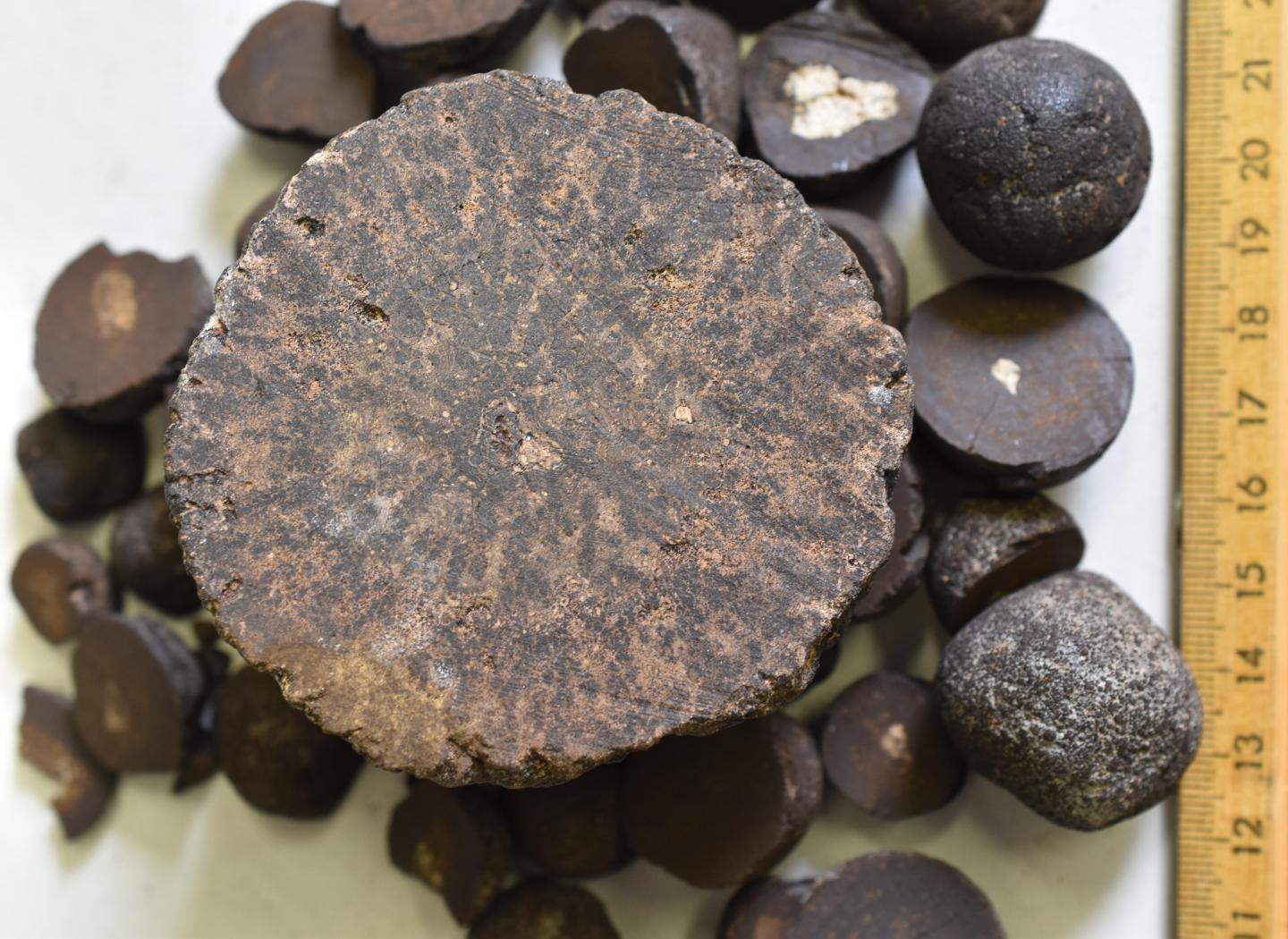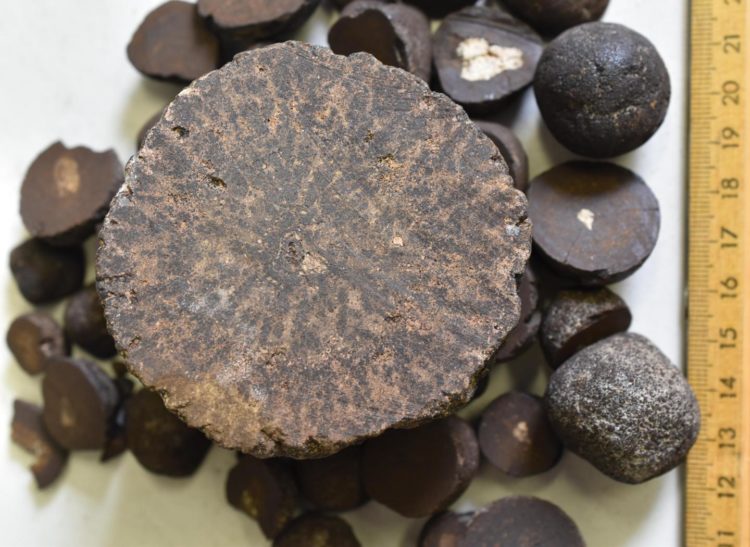New study published in Geology

Credit: Dietmar Müller
Boulder, Colo., USA: Rare metallic elements found in clumps on the deep-ocean floor mysteriously remain uncovered despite the shifting sands and sediment many leagues under the sea. Scientists now think they know why, and it could have important implications for mining these metals while preserving the strange fauna at the bottom of the ocean.
The growth of these deep-sea nodules — metallic lumps of manganese, iron, and other metals found in all the major ocean basins — is one of the slowest known geological processes. These ringed concretions, which are potential sources of rare-earth and other critical elements, grow on average just 10 to 20 millimeters every million years. Yet in one of earth science’s most enduring mysteries, they somehow manage to avoid being buried by sediment despite their locations in areas where clay accumulates at least 100 times faster than the nodules grow.
Understanding how these agglomerations of metals remain on the open sea floor could help geoscientists provide advice on accessing them for industrial use. A new study published this month in Geology will help scientists understand this process better.
“It is important that any mining of these resources is done in a way that preserves the fragile deep-sea environments in which they are found,” said lead author Adriana Dutkiewicz, an ARC Future Fellow in the School of Geosciences at The University of Sydney.
Rare-earth and other critical elements are essential for the development of technologies needed for low-carbon economies. They will play an increasingly important role for next-generation solar cells, efficient wind turbines, and rechargeable batteries that will power the renewables revolution.
Solving the Enigma
From scouring bottom currents to burrowing animals, researchers have proposed a number of mechanisms to account for this enigma. But solving it depends on a better understanding of where the nodules are situated and the environmental conditions that prevail there. Now a global study published in Geology uses predictive machine learning to investigate which factors control the location of polymetallic nodules. The results offer new insights to inform deep-sea mineral exploration as well as its regulation.
“The International Seabed Authority is currently preparing new environmental regulations to govern deep-sea mining,” Dr. Dutkiewicz said. “Our analysis represents a global, data-driven synthesis to impartially inform these policies and deep-ocean environmental management.”
Dr. Dutkiewicz and co-authors Dr. Alexander Judge and Professor Dietmar Müller combined open-access data for thousands of polymetallic nodules with global datasets of key environmental parameters to create a machine-learning model that ranks the factors controlling nodule location. The resulting map predicts where polymetallic nodules are most likely to occur.
The authors were surprised to find that globally the nodules occur in regions where the bottom current speeds are far too slow to remove sediment. Instead, the nodules are associated with seafloor fauna.
“Organisms such as star fish, octopods and molluscs seem to keep the nodules at the seafloor surface by foraging, burrowing and ingesting sediment on and around them,” Dr. Dutkiewicz said. “Although these organisms occur in relatively low concentrations on the abyssal seafloor, they are still abundant enough to locally affect sediment accumulation.”
This insight is supported by direct seafloor observations of nodule fields by independent studies. “Our conclusion is that deep-sea ecosystems and nodules are inextricably connected,” Dr. Dutkiewicz said.
The study results also suggest that the regions where nodules are most likely to occur are more extensive than what has previously been assumed and include vast areas that are yet to be explored–findings with important industrial as well as conservation implications.
“Our map highlights regions that may be important economically,” Dr. Dutkiewicz said, “but at the same time draws attention to areas of the seafloor that may be hotspots for diverse deep-sea organisms that we know little about.”
Because the techniques used by the researchers can be modified to investigate other seafloor features, this approach — as well as the conclusion that there is an apparent “symbiosis” between deep-sea fauna and the nodules — could also have implications for future biodiversity research.
“Vast regions of the deep sea are unexplored,” Dr. Dutkiewicz said, “so the consequences of nodule mining for deep-sea ecosystems need to be carefully evaluated.”
###
FEATURED ARTICLE
Environmental predictors of deep-sea polymetallic nodule occurrence in the global ocean
Adriana Dutkiewicz et al., [email protected]. URL: https:/
GEOLOGY articles are online at http://geology.
https:/
Media Contact
Kea Giles
[email protected]
303-579-1193
Original Source
https:/
Related Journal Article
http://dx.





